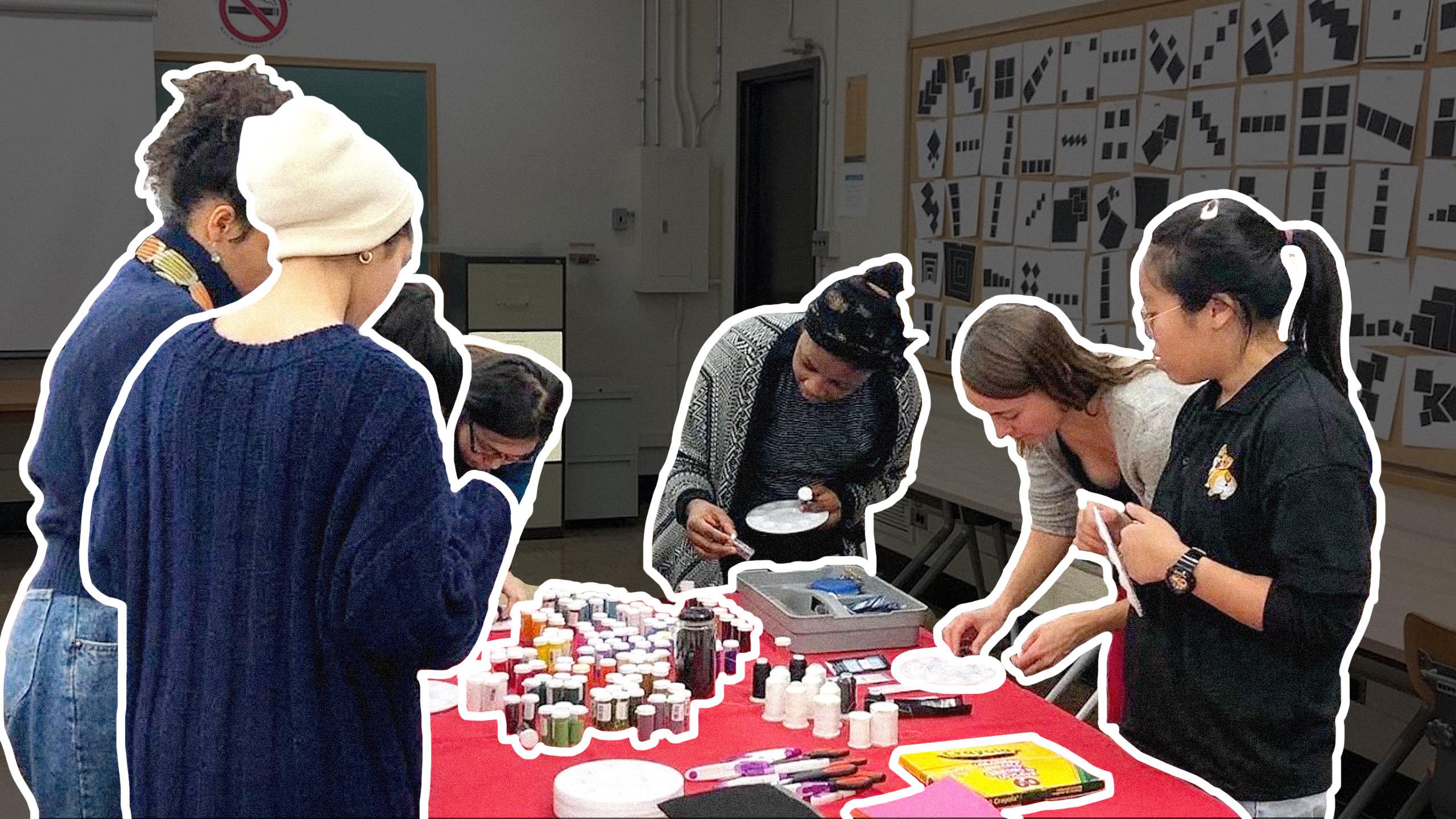By Alexandra Holyk
For Vanessa Nim, a part-Métis descendant from the Red River Settlement and first-year journalism student, participating in the Beading Circles at Ryerson every other Wednesday night in the fall semester was more than just a time to socialize and destress—it was an opportunity to learn about her Indigenous heritage.
“I was disconnected [from] my culture for a very long time,” Nim said.
A Beading Circle is a sacred space for Indigenous and non-Indigenous community members to foster connections between people with different and shared cultural backgrounds, according to Justine Woods. The Métis fashion designer and Ryerson alumna leads the Beading Circles initiative in the fashion school in Kerr Hall South.
A regular event begins with a smudge—a purifying ceremony to cleanse the air and the surroundings done with types of medicines such as cedar, sage or sweetgrass, Woods said.
The smudge is followed by some opening remarks where participants introduce themselves to the group.
“The fact that we are reclaiming space within an institution by doing Indigenous beadwork is really powerful and it definitely contributes efforts of reconciliation and decolonization,” she said. “I think that it’s been really great to have the support from the school, especially with an initiative that contributes to diversity, equity and inclusion,” Woods said. The events are funded by Ryerson’s Student Initiatives Fund.
The Beading Circles began last semester as a monthly pilot project started by Woods and Ryerson fashion contract lecturer Anna Romanovska. Romanovska reached out to Woods after seeing her final fashion project that showcased hand-crafted Indigenous beadwork on the garments.
Now a graduate student at OCAD University, Woods said she uses fashion as a platform to decolonize and contribute to reconciliation for Indigenous communities through storytelling, amplifying voices and dismantling stereotypes against Indigenous individuals.
“Fashion is a really powerful tool that can be used to communicate issues that are happening within society,” Woods said, adding that it can help change people’s perceptions of Indigenous culture.
Kristine Keon, a graduate student at the University of Toronto, said she enjoys attending the Beading Circles as they allow Indigenous people to share their culture with non-Indigenous members of the community. She added that participants often find similarities in traditions when discussing Indigenous and non-Indigenous cultures.
At every Beading Circle gathering, Woods said she spends time teaching newcomers some basic beading techniques.
“It shares not just the tangible cultural art of beading and knowledge behind that,” Nim said. “It also shares those less tangible, but almost more valuable aspects of Indigenous culture, like understandings about connection and community and support.”











Shirley Boomer
I definitely want to know more…..